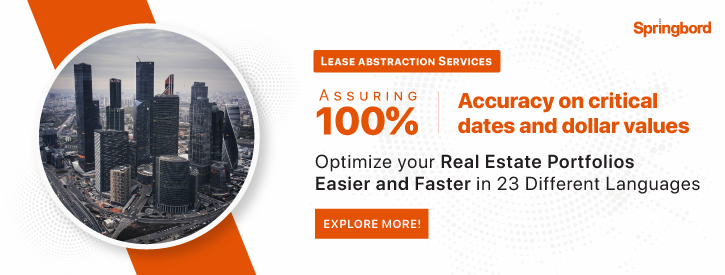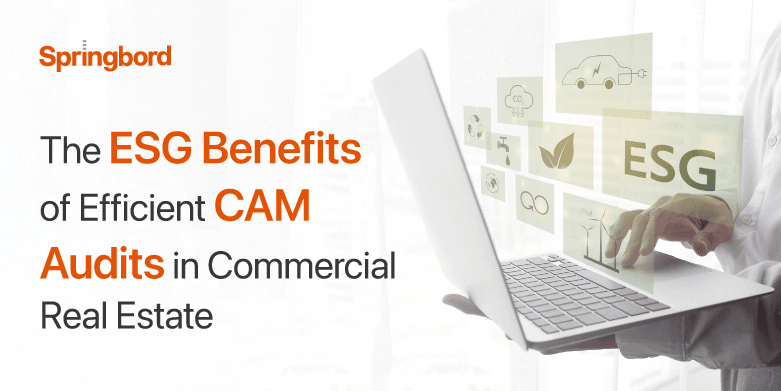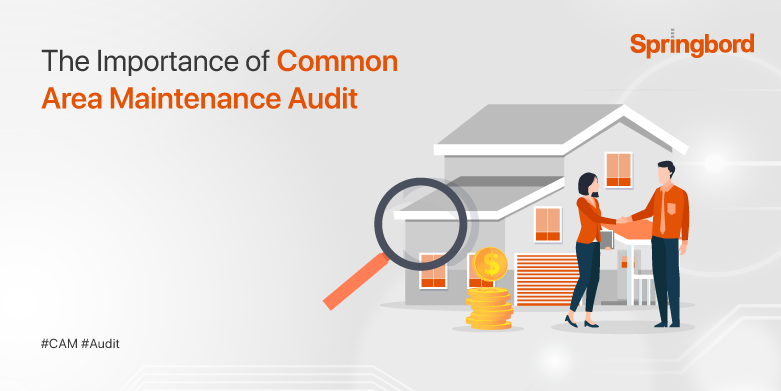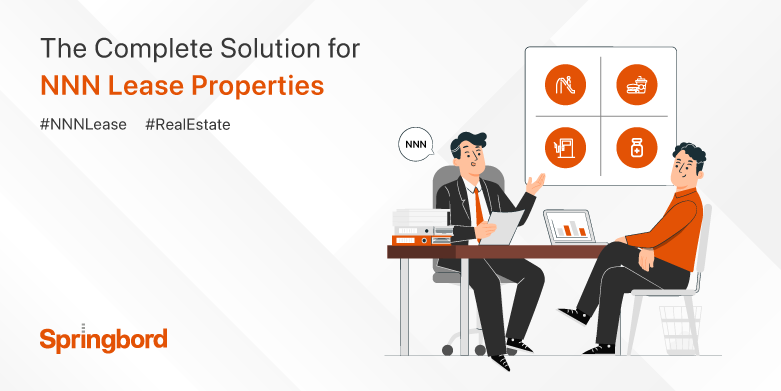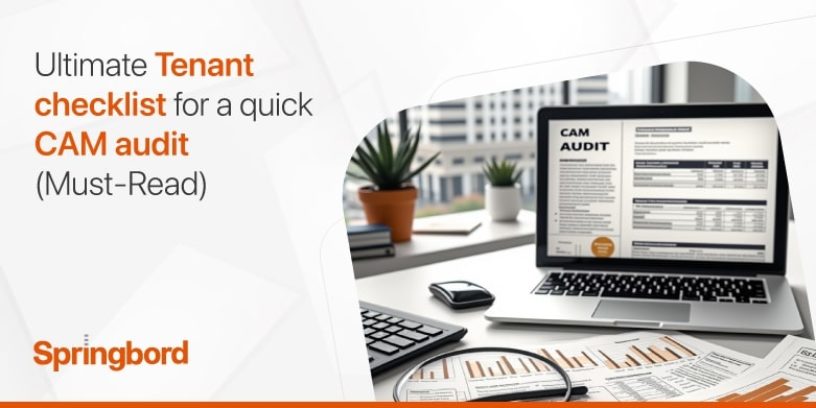 Read time 6 min
Read time 6 minIn today’s volatile real estate environment, controlling occupancy costs has become a strategic priority for commercial tenants. One of the most opaque and error-prone components of a commercial lease is the Common Area Maintenance (CAM) charge.
A category that includes everything from landscaping and janitorial services to property taxes and building maintenance. While intended to equitably distribute shared operating costs, CAM reconciliations are often riddled with inconsistencies, misclassifications, and overcharges.
Recent industry reviews suggest that more than 70% of CAM statements contain billing inaccuracies, often stemming from vague lease clauses, incorrect pro-rata allocations, and the improper inclusion of capital expenditures. In high-traffic retail centres and multi-tenant office buildings, these inaccuracies can amount to tens or even hundreds of thousands of dollars in excess costs each year.
Yet many tenants overlook CAM audits due to their complexity and lack of internal resources. Without a structured review process, tenants face increased risk exposure, diminished cost predictability, and reduced negotiating leverage.
A technical, checklist-driven audit approach can change that.
This blog outlines a comprehensive CAM audit checklist tailored specifically for commercial tenants and business owners who want to take a proactive, detail-oriented approach to lease expense management. Whether managing a single property or a national portfolio, this guide offers a practical framework to identify errors, enforce lease terms, and strengthen cost controls.
CAM Audit checklist for tenants
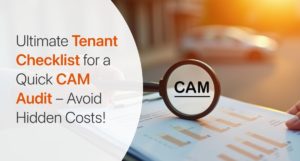
A structured and technically informed CAM audit isn’t optional—it’s essential. Below is a tactical, pro-level checklist designed specifically for commercial tenants and business owners who want to proactively control expenses, enforce lease compliance, and eliminate hidden cost burdens.
1. Lease Language Precision Check
Purpose: Ensure you’re not being charged beyond your negotiated terms.
The foundation of any CAM audit starts with the lease itself. A well-defined CAM clause can limit ambiguity, while a vague one opens the door to landlord discretion.
- Review CAM definition: Ensure it clearly distinguishes between reimbursable and non-reimbursable items. Scrutinize for “gross-up” language, where variable expenses are increased to reflect a fully occupied building.
- Capital Exclusions: Confirm whether the lease excludes capital expenditures, structural repairs, or ownership-related costs. These are common overcharges that can be contractually barred.
- Audit Rights: Your lease should grant reasonable audit access, including timeframes (often 60–120 days), inspection rights, and access to source documents and not just summaries.
- Expense Caps: Check if annual CAM increases are capped (e.g., 5% per year) and whether these are compounded or reset upon renewal.
Springbord provides detailed lease abstraction services that surface and validate all these key terms to reduce interpretation risk and build an auditable lease database.
2. Base Year & Pro Rata Share Accuracy
Purpose: Detect manipulation in base-year expense setups.
Base year manipulations are one of the most common ways landlords can inflate future CAM pass-throughs.
- Inflated Base Year: If the base year contains abnormally high, one-time costs (e.g., storm repairs), this sets an artificially high benchmark for the tenant’s obligations in subsequent years.
- Pro-Rata Accuracy: Ensure that your share of expenses reflects your occupied square footage relative to total rentable area—adjusted for any landlord expansions or reconfigurations.
- Square Footage Changes: Landlord additions or re-measurements can shift your share subtly over time—this must be monitored closely.
Springbord validates base-year structures and performs square footage benchmarking across tenant portfolios to ensure proportionality and fairness in expense allocation.
3. Expense Pool Scrutiny
Purpose: Identify improper charges and cost-shifting.
Landlords may attempt to blend non-CAM charges into the operating expense pool.
- Line-by-Line Review: Request the landlord’s general ledger (GL) detail, not just summary sheets. Look for non-operating expenses like marketing, legal fees, or executive salaries.
- Common Area Relevance: All CAM charges should directly relate to maintaining shared spaces. Anything tenant-specific (e.g., suite repairs) should not appear here.
- Cost-Shifting Detection: Monitor sudden spikes in categories like admin or insurance. Landlords often shift unrecoverable costs into CAM pools during financial downturns.
Springbord’s forensic reconciliation audits parse itemized GL entries and flag misclassifications in vendor billing and overhead charges.
4. Capital Expenditures Audit
Purpose: Block capital upgrades being passed off as CAM.
CAM is meant to recover operating expenses, not capital improvements unless explicitly allowed in the lease.
- OpEx vs. CapEx: Distinguish using GAAP rules or lease definitions. Items like roof replacements or HVAC overhauls should not be passed through unless amortized per lease terms.
- If Allowed: Verify the amortization period, applied interest rate, and whether the upgrade benefits tenants (e.g., energy-saving LED retrofits).
- IRS Publication 946: Use federal depreciation standards as a reference for what constitutes a capital investment.
Springbord uses lease clause alignment and CapEx validation to challenge unjustified recoveries, saving clients thousands annually.
5. Reconciliation Statement Validation
Purpose: Spot overcharges and errors in annual statements.
CAM reconciliations are prone to human error or manipulation.
- Actual vs. Budgeted: Compare actual expenses billed against budgeted projections. Large variances should be flagged and explained.
- Reconciliation Basis: Ensure it’s based on actual, not estimated, expenses. Some landlords attempt “true-ups” based on forecasts, which are not contractually compliant.
- Double Billing: Watch for costs billed under both CAM and other categories (e.g., utilities). This is more common in mixed-use properties.
Springbord provides CAM statement validation with side-by-side reconciliation reports to surface discrepancies and identify billing anomalies.

6. Gross-Up Review for Variable Expenses
Purpose: Ensure proper application in under-occupied buildings.
Gross-ups protect landlords in partially vacant buildings but must be calculated correctly.
- Occupancy Threshold: The standard is a 95% occupancy assumption for variable costs (e.g., janitorial). Anything higher could unfairly inflate charges.
- Correct Expense Type: Only variable costs (those that change with occupancy) should be grossed up; fixed costs like insurance or landscaping should not.
- Independent Recalculation: Engage an accountant or lease audit expert to re-compute the gross-up logic.
Springbord automates occupancy-based modelling to validate gross-up assumptions and correct cost loading.
7. Cross-Tenant Comparison (If Available)
Purpose: Benchmark and pressure-test landlord consistency.
When available, this strategy can reveal inconsistent cost allocation practices.
- Anonymized Summaries: Request peer tenant CAM summaries to assess relative allocations.
- Treatment Consistency: Identify whether similar tenants are being charged differently for identical expense categories.
Springbord conducts multi-tenant benchmarking where permitted, uncovering favoritism or inconsistent billing methodologies.
8. Third-Party Contract Review
Purpose: Assess vendor overcharging or related-party abuse.
CAM pass-throughs should reflect actual vendor costs, not marked-up or inflated contracts.
- Vendor Contracts: Request copies of janitorial, HVAC, snow removal, and security contracts to validate market rates.
- Management Fees: Landlords often layer admin fees on vendor invoices. Check if these are lease-authorized.
- Affiliated Vendors: Identify whether vendors are controlled by the landlord, which can introduce profit-taking.
Springbord supports vendor contract audits and cross-verification of third-party billing with independent market benchmarks.
9. Audit Cost-Benefit Strategy
Purpose: Decide when to audit and how to approach.
Not all overcharges warrant a full audit. Prioritize by financial impact and timing.
- Audit Thresholds: A general rule: if actual CAM charges exceed the base or budget by 5–10%, an audit is warranted.
- Estimate ROI: Compare audit costs against potential recoveries based on past issues.
- Timing: Align audits with lease renewals or option windows to improve negotiation leverage.
Springbord helps clients set custom audit thresholds and performs cost-benefit modeling before undertaking deep-dive reconciliations.
10. Document Retention & Negotiation Notes
Purpose: Maintain defensible records for long-term lease oversight.
CAM audits often reveal issues that may become relevant years later.
- Retention Policies: Keep all CAM statements, GLs, and correspondence for at least 4–6 years (or per lease stipulations).
- Negotiation Tracker: Maintain notes on negotiated concessions, caps, or landlord agreements related to CAM.
- Future Use: Leverage audit findings to renegotiate future leases or strike problematic language.
Springbord maintains structured document repositories and audit history archives to support clients across lease cycles and negotiations.
Conclusion
CAM audits are no longer a reactive process, they are a strategic tool for financial governance and operational efficiency. Inaccurate reconciliations, vague lease clauses, and unchecked expenses can compound quickly, eroding profitability and weakening tenant leverage over time.
By applying a structured, technically informed audit approach, commercial tenants can reclaim control over their occupancy costs, enforce lease compliance, and hold landlords accountable to contract terms.
Whether you’re overseeing a single lease or managing a national portfolio, implementing this checklist can dramatically improve your real estate cost oversight and risk mitigation strategy.
Springbord’s customized solutions are made to optimize your lease procedures, enhance audit results, and safeguard your financial interests, regardless of whether you are overseeing a single site or a portfolio of locations.Explore our CAM reconciliation and lease audit services or contact us to discover how Springbord can help you build a more transparent and efficient lease management framework.



